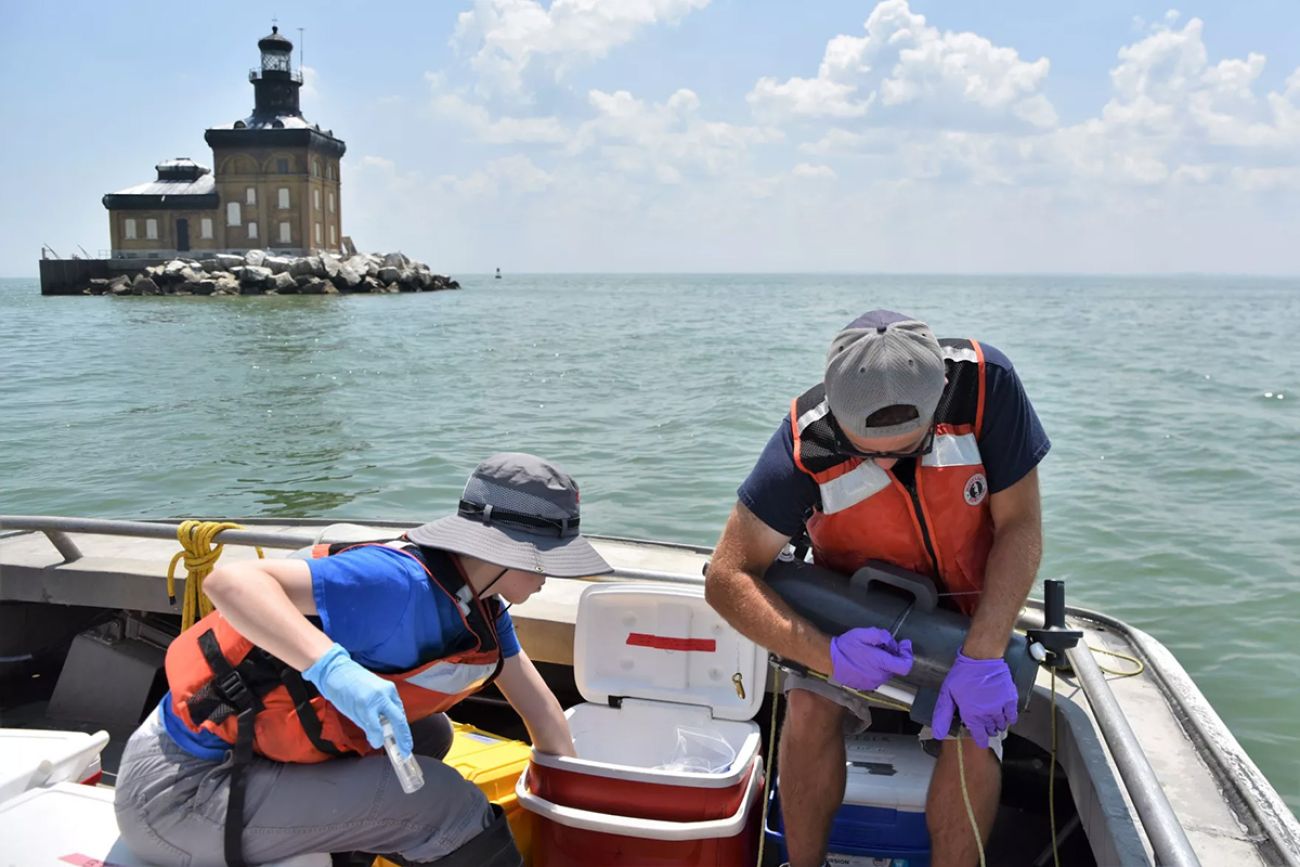EPA to decide soon on Ohio plan to reduce phosphorus pollution in Lake Erie

By the end of the month, the U.S. Environmental Protection Agency (EPA) is expected to decide whether to approve an Ohio plan to reduce phosphorus pollution that feeds cyanobacteria in Lake Erie. Cyanobacterial blooms have become much larger in the last 30 years. The blooms can release toxins that cause neurological damage and liver damage to fish, dogs, and people. Some dogs have died.
Under a consent decree, Ohio has to come up with a plan to reduce the phosphorus feeding the blooms. The agreed reduction should reduce phosphorus by 40 percent.
Phosphorus gets into Lake Erie when it’s washed off farm fields and then down rivers such as the Maumee in Ohio, the Huron, Rouge, and River Raisin in Michigan. It enters Lake Erie as particles suspended in the water and as dissolved phosphorus
This article is part of The Great Lakes News Collaborative, which includes Bridge Michigan, Circle of Blue, Great Lakes Now at Detroit Public Television, and Michigan Radio. It unites newsroom resources to report on the most pressing threats to the Great Lakes and drinking water supplies, including pollution, climate change, and aging infrastructure. The independent journalism is supported by the Charles Stewart Mott Foundation.
There is research showing dissolved phosphorus is more readily taken up by cyanobacteria, making it a more significant source of nutrients feeding the larger blooms.
Related:
- Chicago suburbs, running out of water, will tap Lake Michigan
- What's being done about plastic trash getting into the Great Lakes?
- In Benton Harbor, lead lines are gone but water remains a luxury
The Ohio Department of Natural Resources does not specifically target dissolved reactive phosphorus.
In an opinion piece published by Cleveland.com, a former Director of the Ohio Sea Grant, Jeff Reutter, wrote that the Ohio plan is “doomed to fail” because its approach of reducing total phosphorus would mean only a slight reduction in dissolved phosphorus.
He blames confined animal feeding operations (CAFOs) which grow thousands of heads of cattle or hogs, producing massive amounts of manure rich in phosphorus, as a major source of the problem.
Some environmentalists say the only way to reduce the phosphorus load is to stop allowing CAFOs and the manure they produce.
Chris Winslow is the current Director of the Ohio Sea Grant. He disagreed. He said research shows that CAFOs are only a part of the problem.
“The increase (in cyanobacterial blooms) that we saw started happening in in the mid-90s, that does not correspond or correlate with the increase in these CAFOs. I'm not saying that the animal operations and manure isn't something that we need to watch. I always say phosphorus is phosphorus is phosphorus,” he said.
He said the acreage of land where manure is spread is relatively small compared to the much wider use of commercial phosphorus that’s routinely used on most farmland.
He said there are basically five sources of phosphorus.
“That stuff that's already in the soils, what we call old phosphorus, or it's going to be commercially applied phosphorous. Those are the largest sources of our runoff and then point sources: so, pipes that deliver phosphorus, usually from wastewater treatment plants, septic, and manure are going to be the more minor players,” he said.

Without cooperation from farmers in better monitoring inputs, growing grassy buffer strips between farm fields and waterways and other practices to keep phosphorus, nitrogen, and other fertilizers out of the rivers, Lake Erie will continue to see large toxic cyanobacterial blooms.
Environmental groups are urging people to send notes to the EPA, asking the agency to reject the Ohio plan. The Lake Erie Waterkeeper group is circulating a petition also calling on the EPA to reject the plan.
Jeff Reutter wants the EPA to either tell the state to revise the plan, or the EPA should come up with a stronger plan of its own that can fix the problem of widespread toxic cyanobacterial blooms once and for all, according to his column.
Michigan Environment Watch
Michigan Environment Watch examines how public policy, industry, and other factors interact with the state’s trove of natural resources.
- See full coverage
- Subscribe
- Share tips and questions with Bridge environment reporter Kelly House
Michigan Environment Watch is made possible by generous financial support from:
Our generous Environment Watch underwriters encourage Bridge Michigan readers to also support civic journalism by becoming Bridge members. Please consider joining today.
See what new members are saying about why they donated to Bridge Michigan:
- “In order for this information to be accurate and unbiased it must be underwritten by its readers, not by special interests.” - Larry S.
- “Not many other media sources report on the topics Bridge does.” - Susan B.
- “Your journalism is outstanding and rare these days.” - Mark S.
If you want to ensure the future of nonpartisan, nonprofit Michigan journalism, please become a member today. You, too, will be asked why you donated and maybe we'll feature your quote next time!






